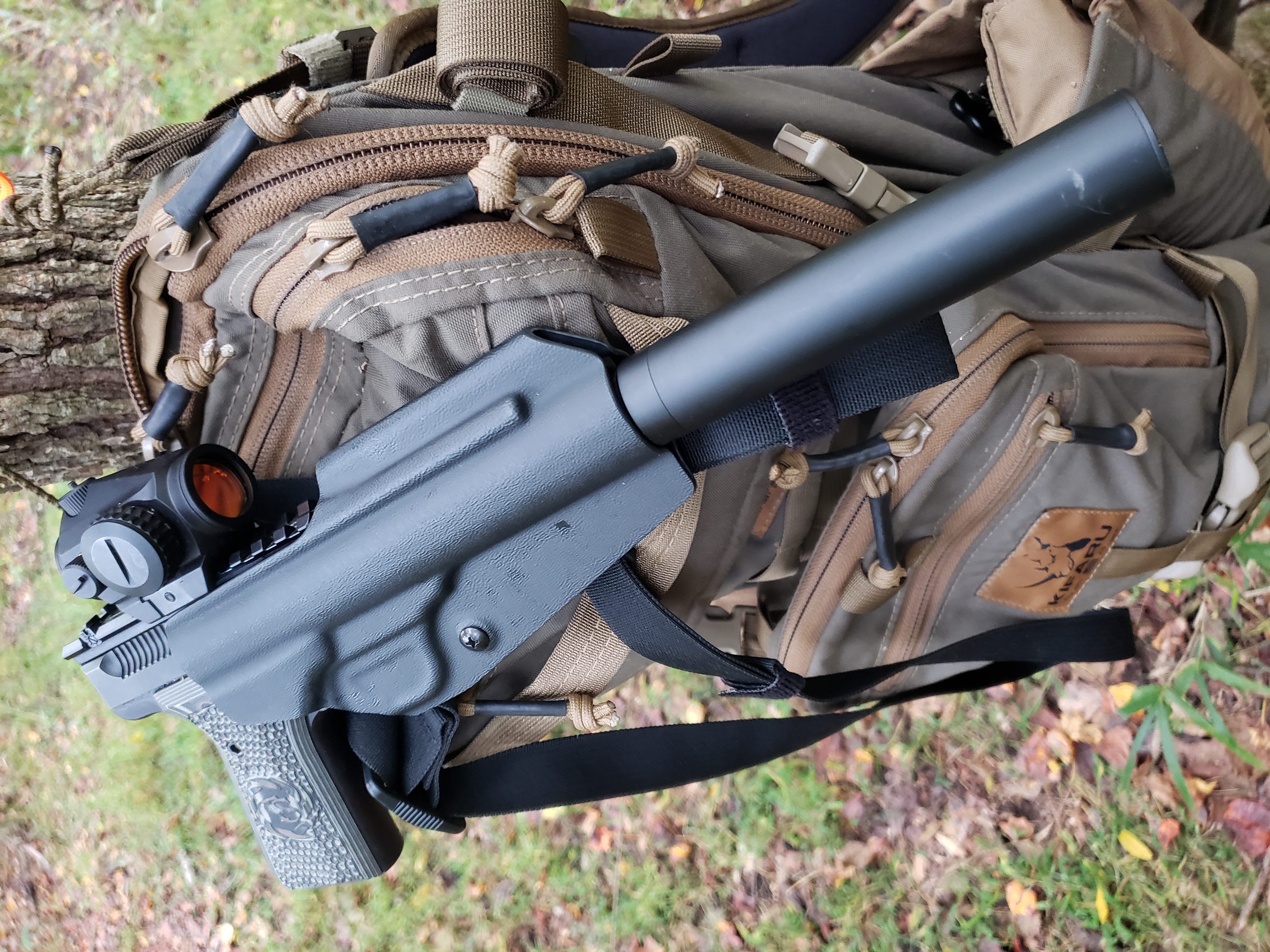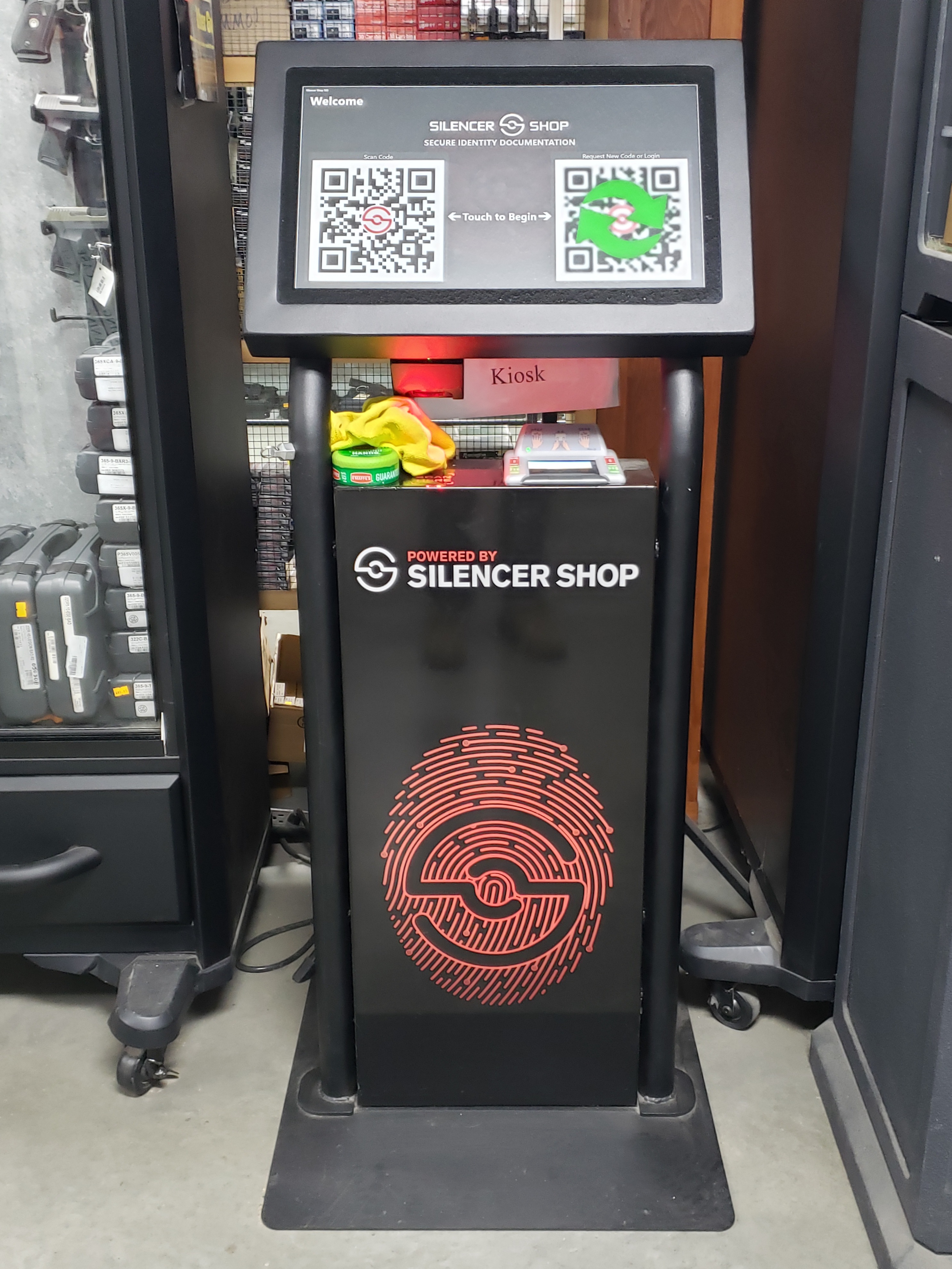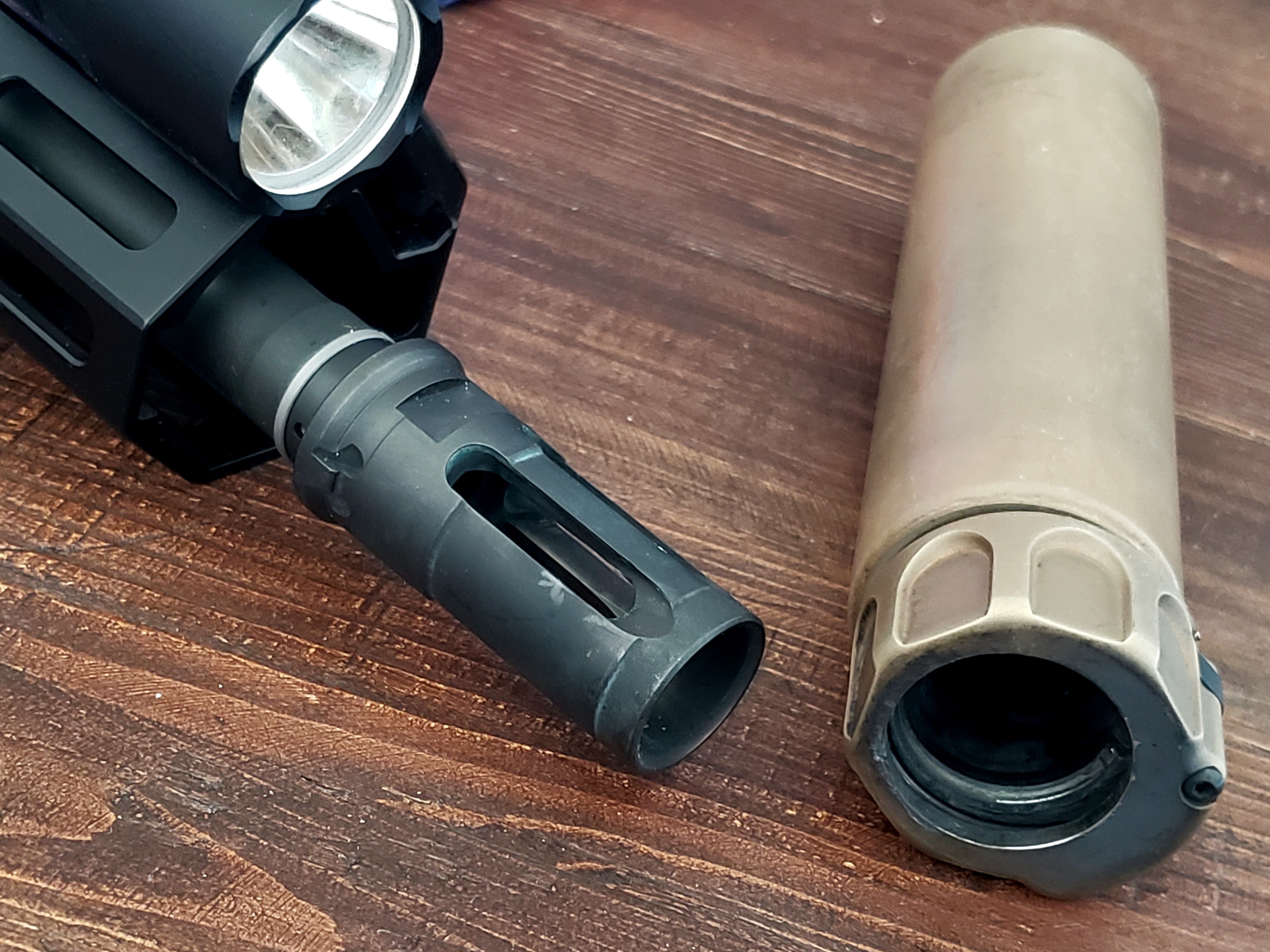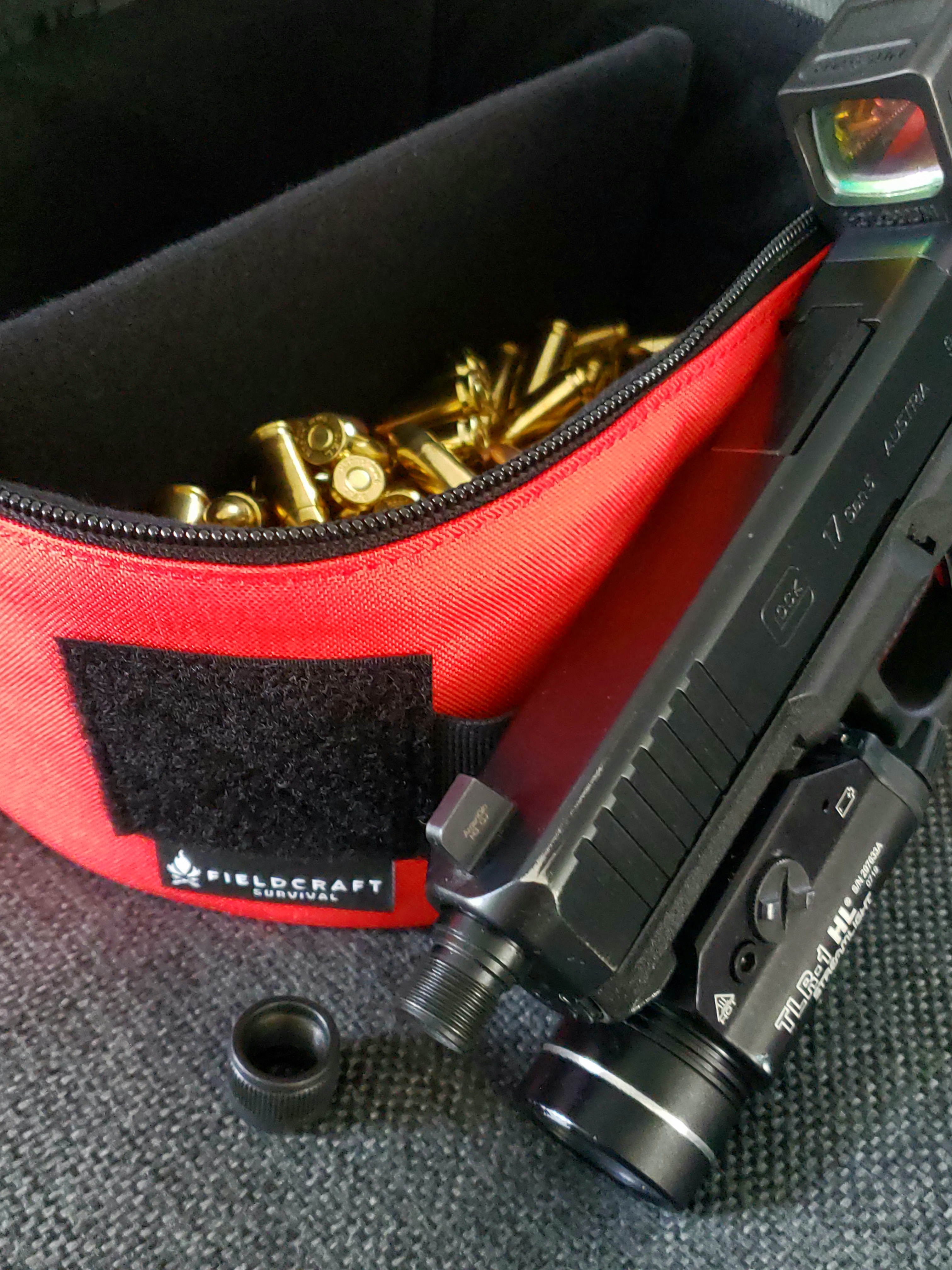Suppressors are the civilized way to enjoy your firearms. In addition to being good for your health (regular exposure to unsuppressed gunfire can cause hearing loss), there are plenty of advantages to making suppressor use a wise decision. Suppressors make sense, but acquiring one legally can be burdensome and discouraging if you aren’t familiar with it. To a newbie, there are a lot of questions that need answering and decisions to be made. This week’s blog is a general overview for beginners and is a starting point in the class III process.
“Silencer”
The words “suppressor” and “silencer” are used interchangeably. While the term "silencer" is the proper legal term, it is misleading and causes those unfamiliar to believe that you won't hear the gun shot at all. However, "suppressor" is a closer term to what actually happens. You are suppressing the sound from the muzzle, but you aren’t making it silent. The Hollywood whisper-quiet “silencer” is hard to come by unless you use subsonic ammunition and a .22 long rifle suppressor. That said, the .22 LR suppressed is a lot of fun to use, and it is incredible to witness a gun you “almost can’t hear” in person. Other rounds and suppressor combinations can provide an impressively quiet performance, but they aren’t the same as you’ll hear, or won’t hear, in a movie. While the range of sound reduction can fluctuate based on a number of factors, keep in mind that “suppressor” and “silencer” are used back and forth, as is the word “can” and they all mean the same thing. You can put a can on your firearm to “suppress” or “silence” it.

Tax Stamps and Paperwork
The easiest way to purchase a suppressor is to visit a gun store with a Silencer Shop Kiosk. My local gun Store here in NC is Ed’s Gun Shop. This kiosk will let you submit all of your paperwork electronically. Otherwise, the paper forms take longer. Remember, unlike your firearm purchases, a class III item requires your photograph against a white background and fingerprints. Furthermore, you’ll need to pay $200 in theft… I mean taxes to complete your application process. If this is confusing already, don’t worry. Just visit a reputable shop, and the guys/gals behind the counter can walk you through the steps they require at their store. Once your paperwork is complete, expect a significant wait time as the ATF approves it. Sometimes, wait times are longer than others, but if you are lucky, you might be surprised with a quick turnaround.

Host Firearms
There are so many fantastic host firearms for suppressors. If you have a common thread pitch like 1/2x28 on your .22 pistol and your .22 rifle, you can easily swap your suppressor from handgun to long gun. The same is true if you have multiple aftermarket barrels for different pistols in the same caliber using the same suppressor. Just make sure the thread pitches match, and you don’t accidentally cross thread one. Other suppressors require muzzle devices in exchange for easy on and off in a faster manner. Bear in mind you will need to purchase multiple muzzle devices if you wish to move your suppressor from one rifle to another, and these devices will start adding up in cost quickly. For hunting rifles carried a great distance, I prefer direct thread. For my ARs and precision bolt guns, I’m a fan of Surefire’s flash hiders and SOCOM adapters. Depending on how the suppressor fits your firearm, particularly pistols, you may have to reexamine the sights you are using. There are taller suppressor height-sights available for a less obscured sight picture.

Subsonic/Supersonic Ammo
You will want to run reliable subsonic ammunition to get the most out of your suppressor, and by most, I mean the least amount of noise. The Beretta 92FS shown here will run 115 or 124 gr ammo, but there is still a noticeable crack even if it is quieter than shooting without a suppressor. That said, it is much quieter when I use 147-grain ammunition out of it and my Dead Air Silencers Odessa can. You can still use supersonic ammunition out of any suppressor and reap the benefits of less muzzle flash, reduced recoil, and decibel reduction. Still, it will not be as quiet as a subsonic round. Since many pistol rounds are easily knocked down in velocity or may already be subsonic (I’m talking to you 45ACP), handgun rounds are a blast to use with suppressors if you want the giggle factor of sound reduction. Standard velocity .22 ammunition runs just under 1100 fps, making it subsonic, and it is extremely quiet out of bolt action rifles. It is quiet out of semi-auto rifles as well, but there is always the sound of the bolt cycling to deal with.

They Multiply
To date, I have five suppressors. I started with a .22, then a 7.62, then a 45 ACP, 5.56, and a 9mm. I am currently looking at a couple more and always want to see where suppressor technology is headed. Some suppressors are modular in length with just a couple of wrenches and some extra baffles. Some integral suppressors are part of the barrel that fits into the receiver. There are suppressors for shotguns and even suppressors for 50 BMG rifles. I’d suggest getting a .22 suppressor first, as that is the performance you will appreciate most. Paired with subsonic ammo, your firearm will be quieter than most air rifles.
There are more considerations before you purchase your first suppressor. This blog hopefully helped you dip a toe into the Class III world, and you’ll take the jump from here. Perhaps you settle on owning a single suppressor, and you stay in the shallow end. Or, maybe you end up like me, doing laps in the deep end, finding more and more ways to use suppressors to your advantage in the field.
